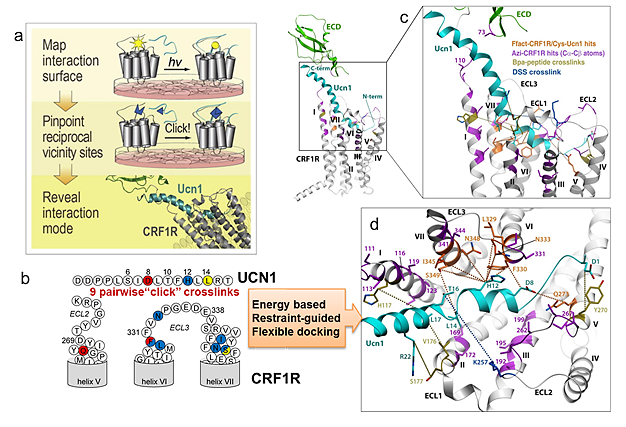

Integrative Structural Biology |
|
We are developping computational approaches to experimentally restrained conformational modeling, which have proved useful in integration of biophysical and biochemical data within the 3D structural framework, leading to insights into activation dynamics of GPCRs. Thus, we used NMR spectroscopy data for a 19F labeled receptor and hydrogen-deuterium exchange mapping (MS-HDX) to understand conformational equilibrium and biased signaling in β2-adrenergic receptor (ß2AR), providing new links between structural and pharmacological properties of adrenergic drugs. We also employed biochemical data, such as extensive mutagenesis, and photo-or click-chemistry crosslinking of unnatural amino acids to predict full-length peptide bound complexes of multidomain class-B receptors (Fig. 3). Notably, the crosslinking approach provides reliable spatial restrains for conformational modeling of the class B complexes, obtained directly in mammalian cells, which is highly complementary to structural information from crystallographic studies.
|
